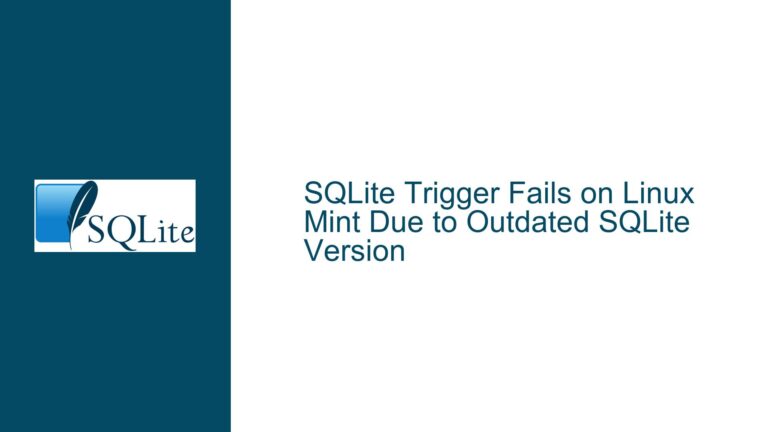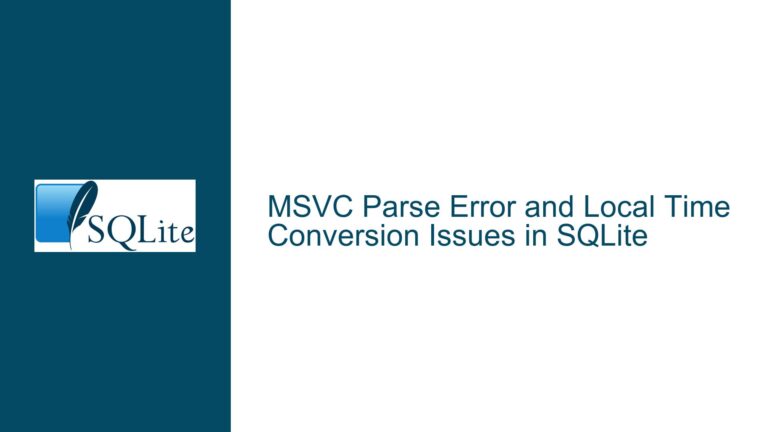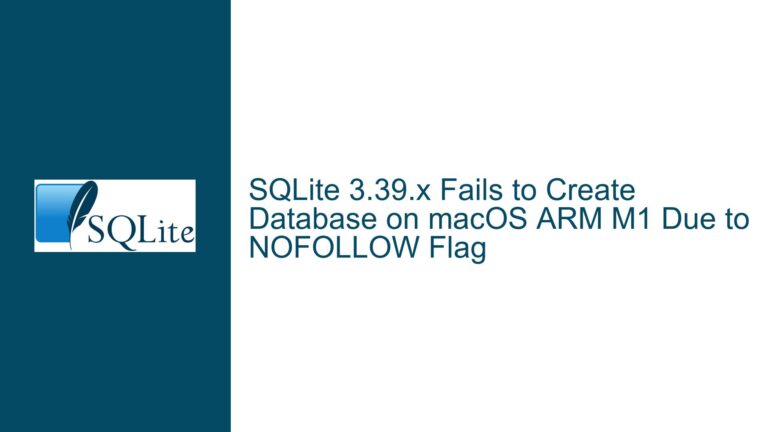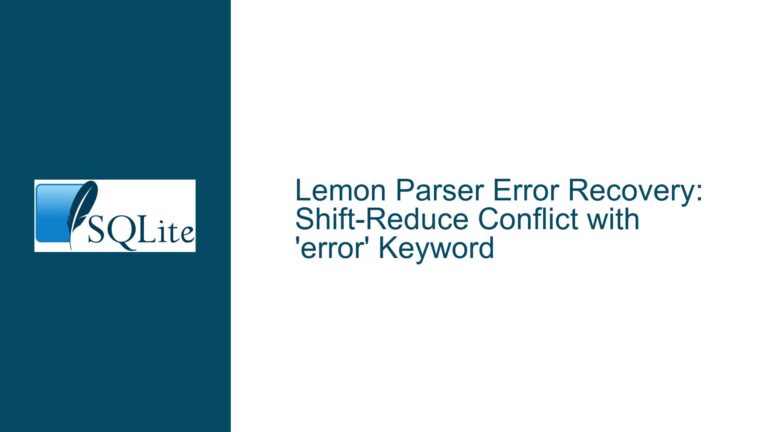SQLite Single-Thread Mode and Multi-Threaded Access Risks
SQLite Single-Thread Mode: Key Concepts and Limitations
SQLite is a lightweight, serverless, and self-contained database engine that is widely used in embedded systems, mobile applications, and desktop software. One of its defining features is its flexibility in threading modes, which allows developers to configure SQLite for different concurrency requirements. However, this flexibility also introduces complexity, particularly when dealing with single-thread mode and multi-threaded access.
Single-thread mode in SQLite is a compile-time option (SQLITE_THREADSAFE=0) that disables all internal mutexes, making the library unsafe for use in multi-threaded environments. This mode is designed for scenarios where SQLite is guaranteed to be accessed by only one thread at a time. While this mode can offer performance benefits in single-threaded applications, it poses significant risks when used in multi-threaded contexts, even if each thread operates on a separate database instance.
The core issue arises from the fact that SQLite’s internal memory management and resource allocation mechanisms are not thread-safe in single-thread mode. This means that concurrent access, even for read-only operations, can lead to race conditions, memory corruption, and application crashes. The documentation explicitly warns against using SQLite in single-thread mode with multiple threads, emphasizing that the library is fundamentally unsafe in such scenarios.
Risks of Multi-Threaded Access in Single-Thread Mode
The primary risk of using SQLite in single-thread mode with multiple threads stems from the lack of internal synchronization mechanisms. In single-thread mode, SQLite disables all mutexes, which are critical for ensuring thread safety in multi-threaded environments. Without these mutexes, concurrent access to SQLite’s internal data structures can result in undefined behavior, including crashes and data corruption.
Even if each thread operates on a separate database instance, the shared internal state of the SQLite library can still lead to conflicts. For example, SQLite’s memory allocator is not thread-safe in single-thread mode. If multiple threads attempt to allocate or deallocate memory simultaneously, the memory allocator may become corrupted, leading to crashes or memory leaks. Similarly, other internal resources, such as file handles and cached data structures, may be accessed concurrently without proper synchronization, further increasing the risk of instability.
Another critical consideration is the behavior of SQLite’s transaction management system. In single-thread mode, the library assumes that only one thread will be accessing the database at any given time. If multiple threads attempt to perform transactions concurrently, the transaction state may become inconsistent, leading to data integrity issues. This is particularly problematic for write operations, but even read-only transactions can be affected if they involve shared resources.
The risks are not limited to explicit multi-threaded access. In some cases, even seemingly single-threaded applications may inadvertently introduce multi-threaded behavior. For example, asynchronous I/O operations or callback functions may execute on separate threads, leading to unexpected concurrency issues. Therefore, it is essential to thoroughly understand the threading model of your application and ensure that SQLite is configured appropriately.
Best Practices for Safe Multi-Threaded Access in SQLite
To avoid the risks associated with single-thread mode, developers should follow best practices for configuring and using SQLite in multi-threaded environments. The most straightforward and recommended approach is to build SQLite with thread support enabled (SQLITE_THREADSAFE=1 or SQLITE_THREADSAFE=2). This ensures that the library’s internal synchronization mechanisms are active, allowing safe concurrent access from multiple threads.
When thread support is enabled, SQLite uses mutexes to protect its internal data structures and resources. This allows multiple threads to safely access the same database instance, provided that proper concurrency control is implemented at the application level. For example, write operations should be serialized to prevent conflicts, while read operations can typically proceed in parallel.
If your application uses separate database instances for each thread, enabling thread support is still recommended. While each thread may operate on a distinct database file, the shared internal state of the SQLite library can still lead to conflicts in single-thread mode. By enabling thread support, you ensure that the library’s memory allocator and other shared resources are properly synchronized, reducing the risk of crashes and corruption.
In scenarios where thread support cannot be enabled, such as when building for a platform with limited threading capabilities, developers must take extra precautions to ensure that SQLite is only accessed from a single thread. This may involve implementing a dedicated database thread or using a message-passing system to serialize database operations. However, these approaches introduce additional complexity and may impact performance, so they should only be used when absolutely necessary.
For applications that require high concurrency and performance, consider using SQLite’s Write-Ahead Logging (WAL) mode. WAL mode allows multiple readers and a single writer to access the database simultaneously, improving concurrency and reducing contention. However, WAL mode also requires thread support to be enabled, as it relies on SQLite’s internal synchronization mechanisms to ensure consistency.
Finally, developers should thoroughly test their applications under realistic workloads to identify and address any concurrency issues. This includes stress testing with multiple threads, simulating high-concurrency scenarios, and monitoring for crashes, memory leaks, and data corruption. By following these best practices, you can ensure that your application uses SQLite safely and efficiently in multi-threaded environments.
In summary, SQLite’s single-thread mode is inherently unsafe for multi-threaded access, even if each thread operates on a separate database instance. The lack of internal synchronization mechanisms can lead to crashes, memory corruption, and data integrity issues. To avoid these risks, developers should build SQLite with thread support enabled and follow best practices for concurrency control. By understanding the limitations of single-thread mode and configuring SQLite appropriately, you can ensure the stability and reliability of your application.






